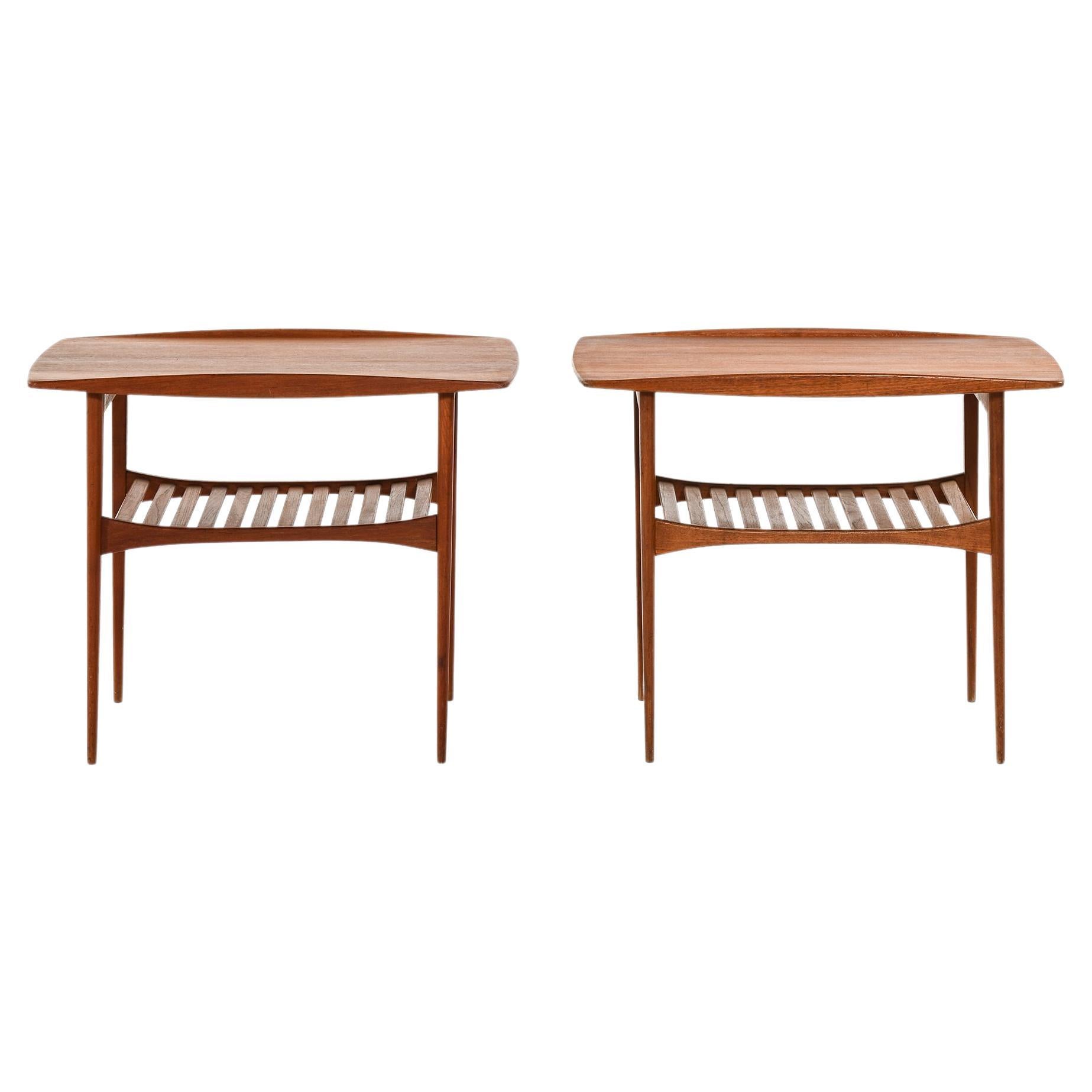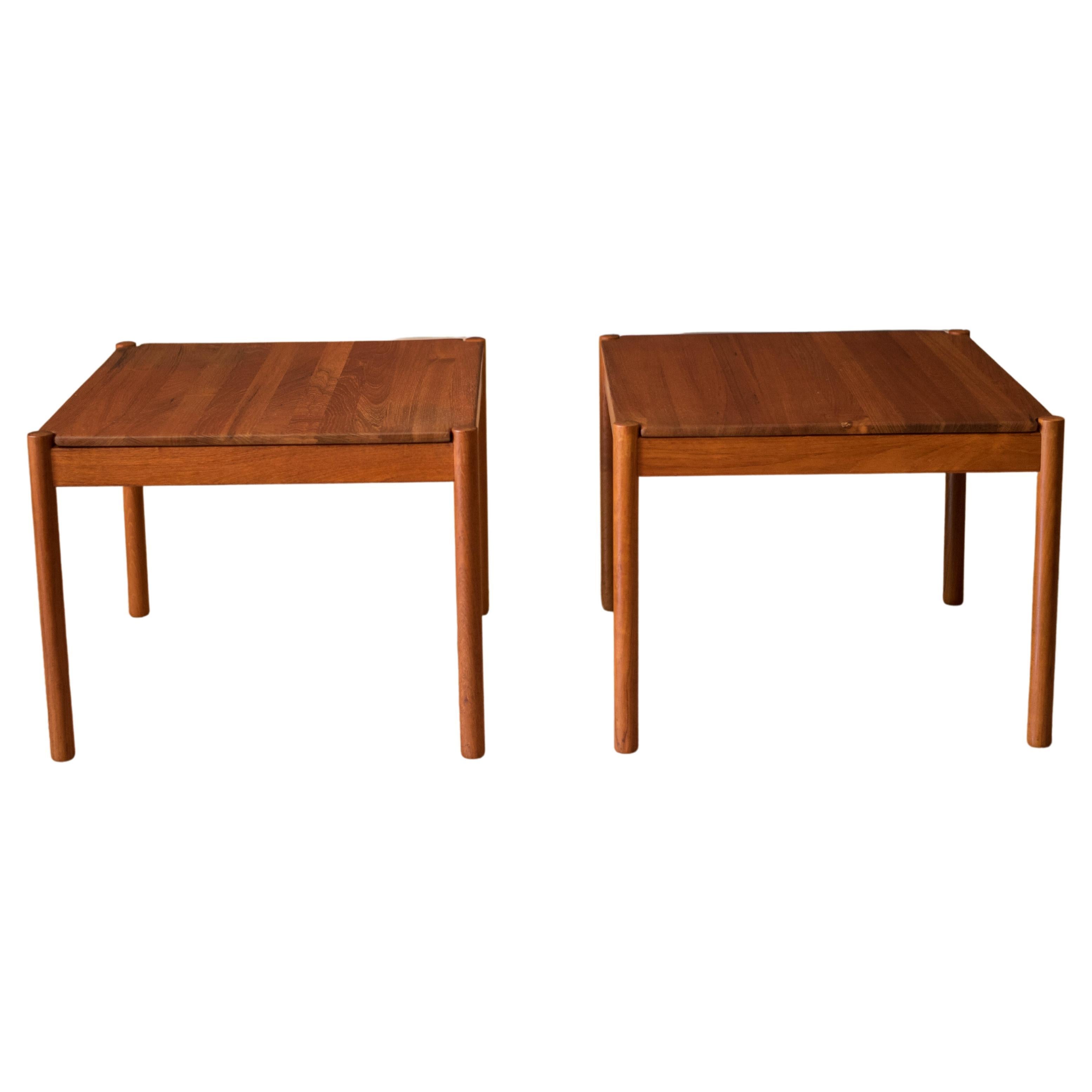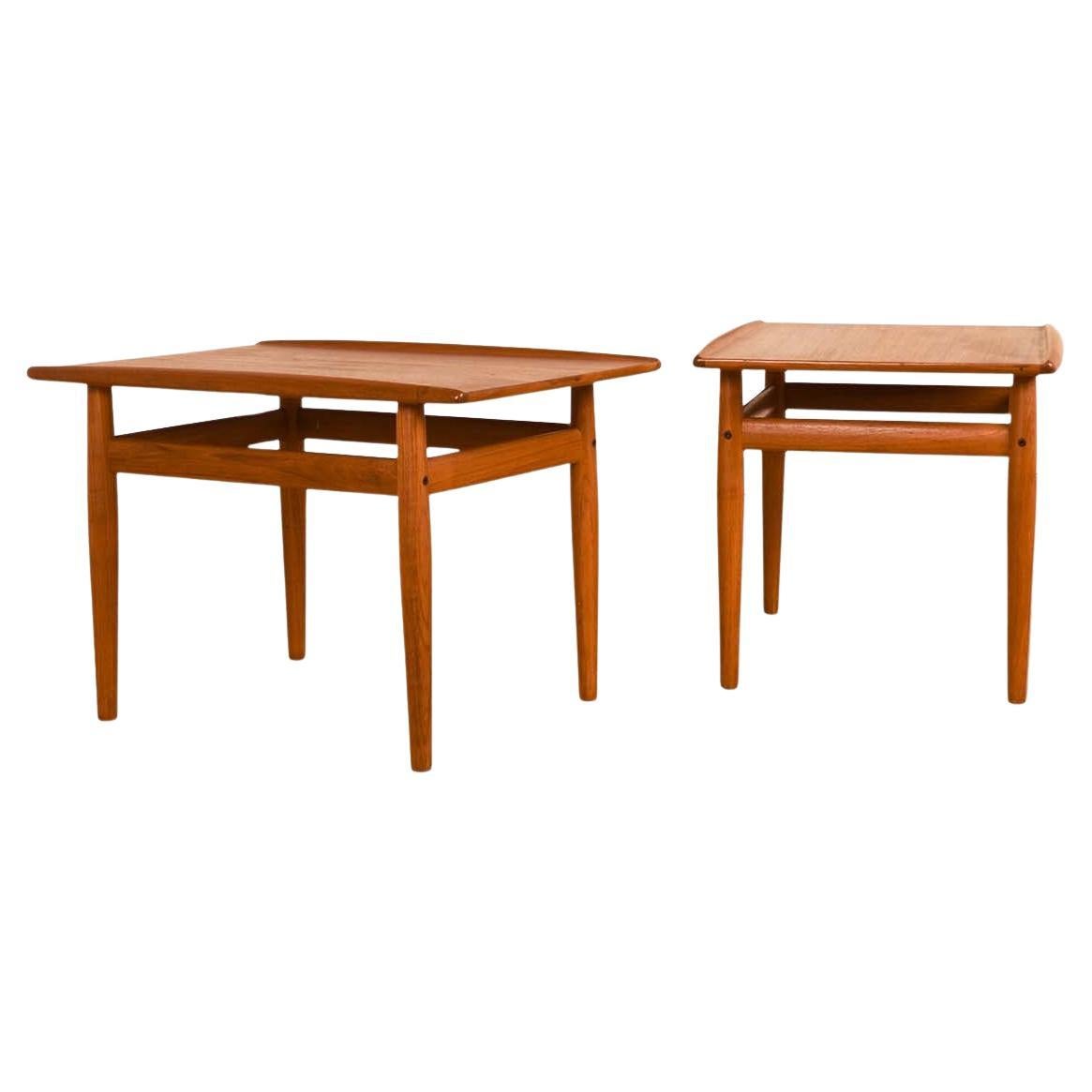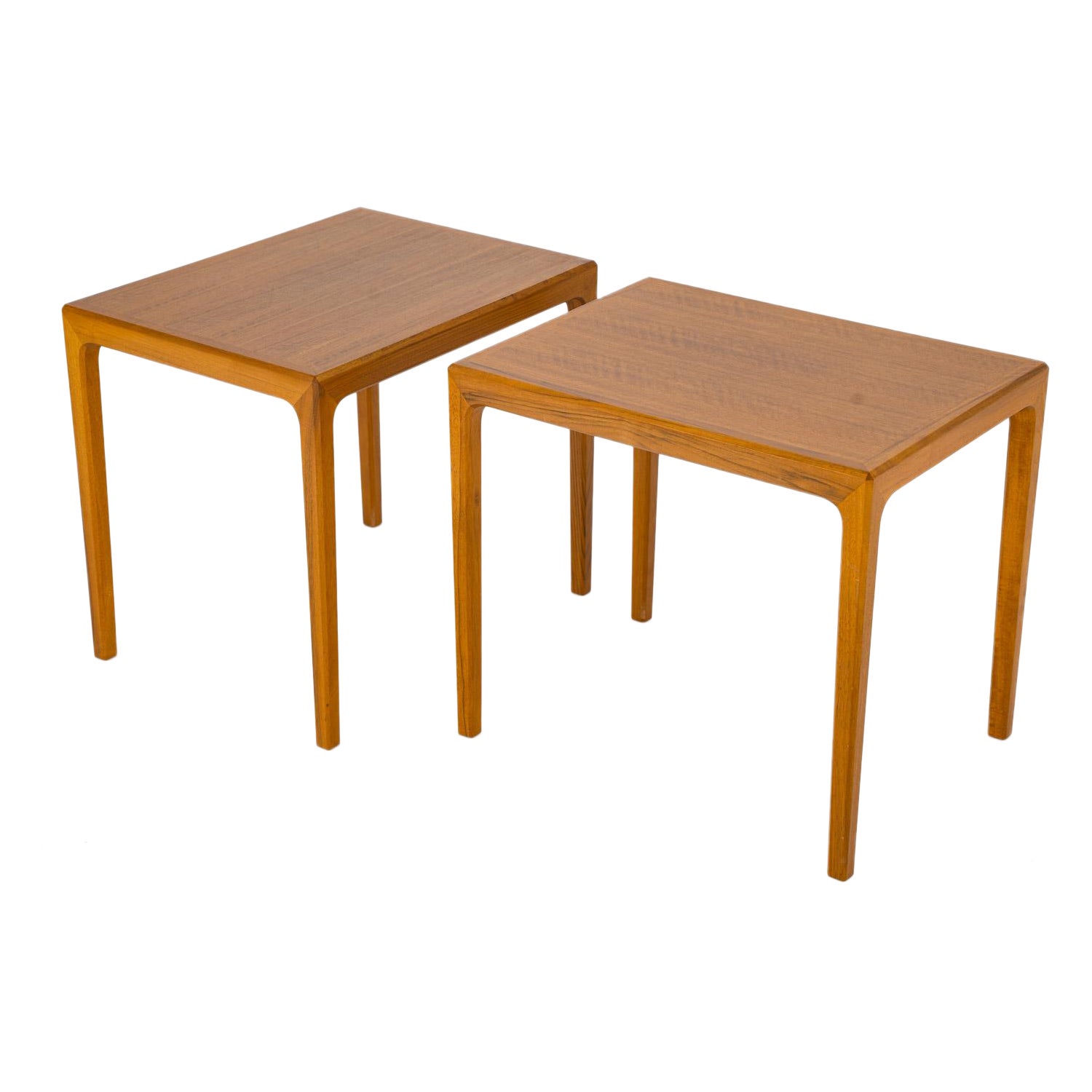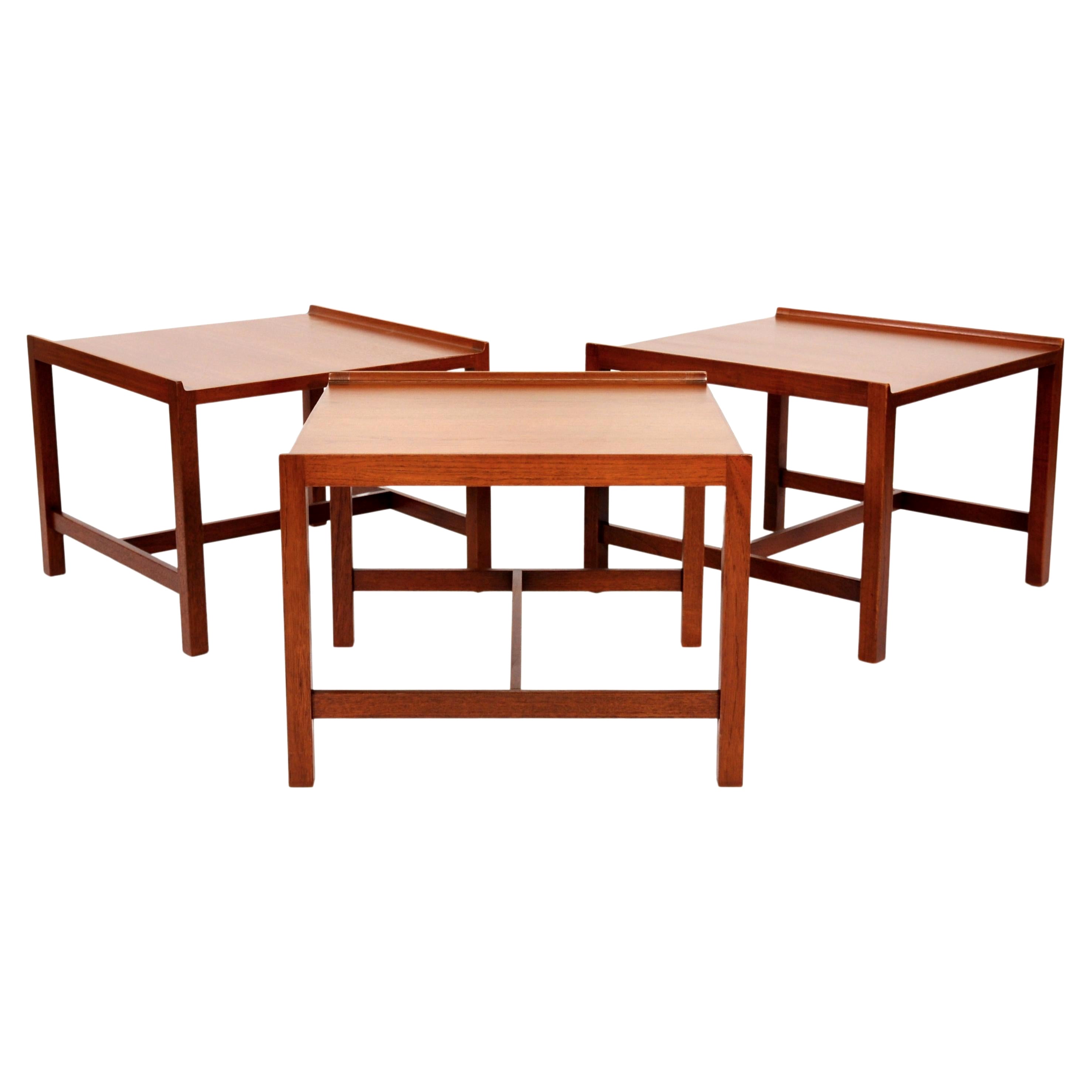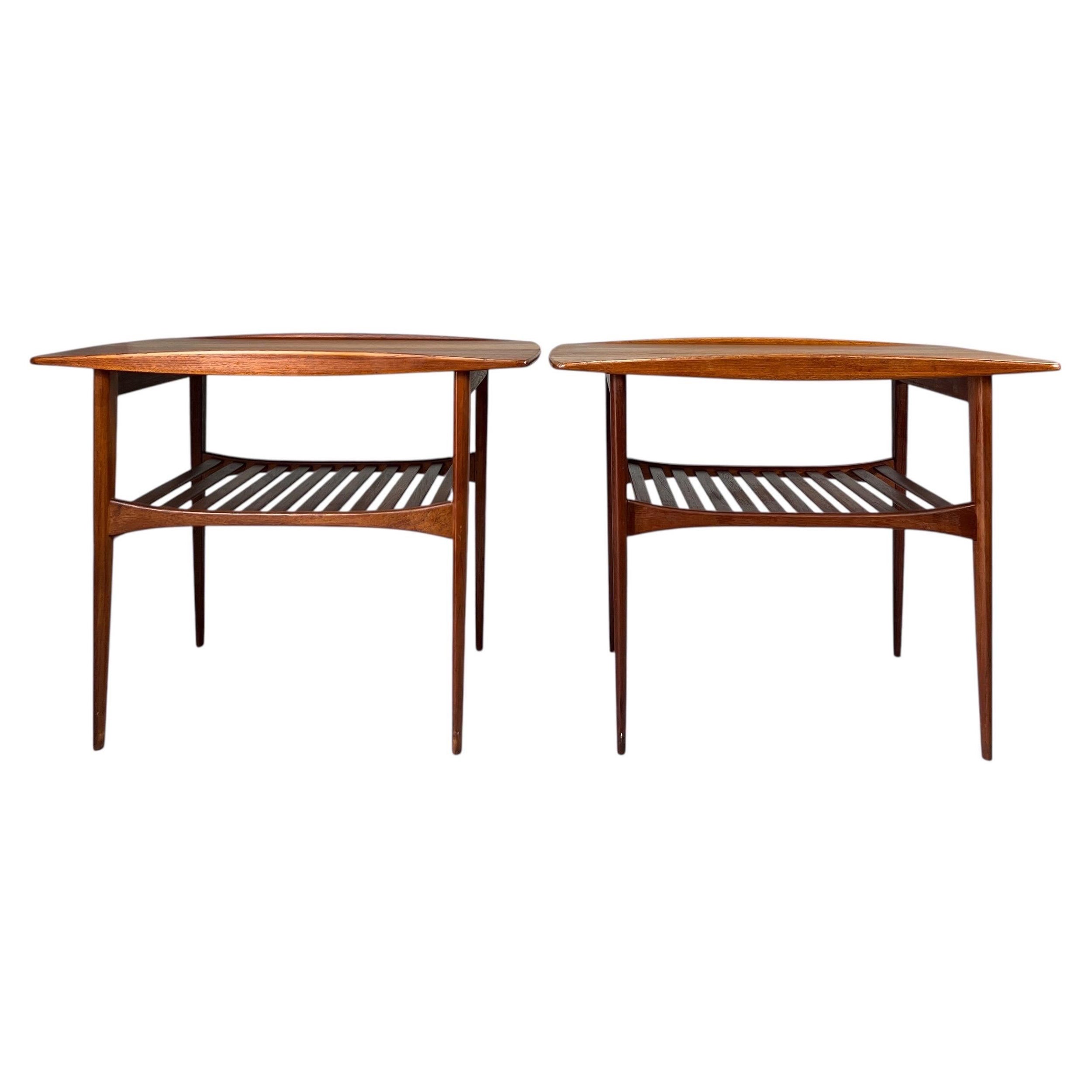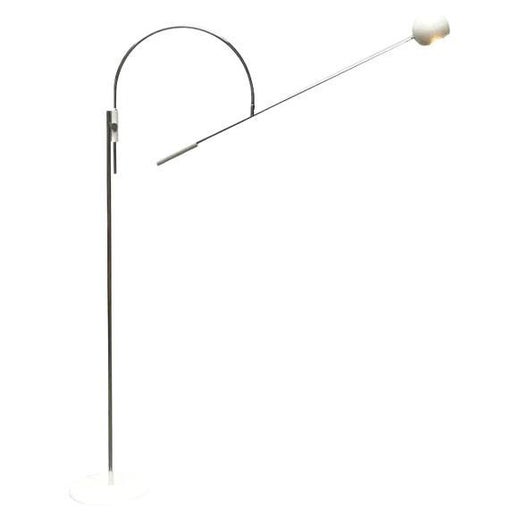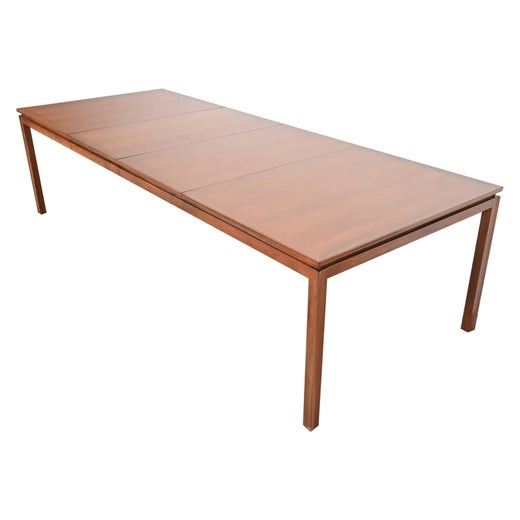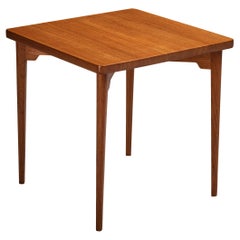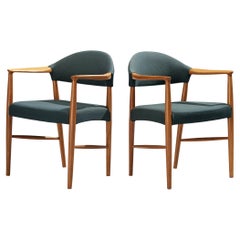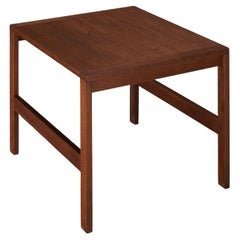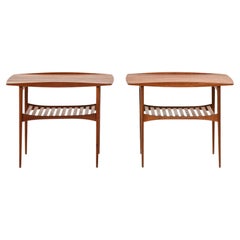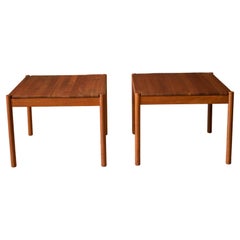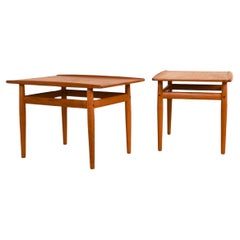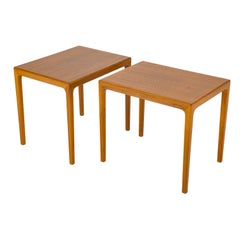Set of Palle Suenson Side Table in Solid Teak with Edward Wormley Armchairs
About the Item
- Creator:
- Dimensions:Height: 29.73 in (75.5 cm)Width: 29.34 in (74.5 cm)Depth: 29.34 in (74.5 cm)
- Sold As:Set of 3
- Style:Mid-Century Modern (Of the Period)
- Materials and Techniques:
- Place of Origin:
- Period:
- Date of Manufacture:1950s
- Condition:Wear consistent with age and use. Every item Morentz offers is checked by our team of 30 craftsmen in our in-house workshop. Special restoration or reupholstery requests can be done. Check ‘About the item’ or ask our design specialists for detailed information on the condition.
- Seller Location:Waalwijk, NL
- Reference Number:Seller: 490000258 + 450102721stDibs: LU933136812042
Robert Sonneman
Though Robert Sonneman was quite literally born into the lighting business, it took working for another celebrated lighting maker for him to land upon the kind of boundary-pushing modernism for which the New York–based designer is known today.
At the age of 19, fresh off a stint in the U.S. Navy, Sonneman responded to an ad for a position working in the studio of George Kovacs on Manhattan’s Upper East Side, where he became the sole employee. “Although my parents were in the lighting business, they came from a traditional perspective, and Kovacs introduced me to modernism,” Sonneman once said. “It was 1961, and I was immediately captured by the movement.”
While working for Kovacs, Sonneman became captivated by the work of the Bauhaus, and he began experimenting with the influential art and design school’s ideas of functional simplicity in lighting. In 1967, he opened his own studio.
Though Sonneman Design Group produced furniture for a brief time, the designer eventually elected to focus on the one category that had always fascinated him; the brand became known for its floor lamps, sconces, pendants and chandeliers that feature unconventional treatments toward shape and balance, often inspired by modern architecture. Sonneman once said of his work: “I saw the lamps that I built as lighting machines that glorified the industrial aesthetic.”
Indeed, in the spirit of Bauhaus functionality — Sonneman has also cited Mies van der Rohe as being an inspiration — the designer’s work takes function-centric forms and motifs and elevates them while prioritizing technology. This spirit of forward thinking continues today, as Sonneman’s brand, renamed SONNEMAN – A Way of Light in 2003, works with LED bulbs to continue to push the boundaries of what functional lighting can achieve aesthetically.
Current-day releases by SONNEMAN – A Way of Light (still overseen by Sonneman himself) feature 95 percent LED lights and include interior and exterior lighting as well as modular suspended lights as an alternative to track lighting. Sonneman’s vintage pieces, however, are still widely collected on the secondary market.
Find vintage Robert Sonneman lighting on 1stDibs.
Edward Wormley
As the longtime director of design for the Dunbar furniture company, Edward Wormley was, along with such peers as George Nelson at Herman Miller Inc., and Florence Knoll of Knoll Inc., one of the leading forces in bringing modern design into American homes in the mid-20th century. Not an axiomatic modernist, Wormley deeply appreciated traditional design, and consequently his vintage seating, storage cabinets, bar carts and other work has an understated warmth and a timeless quality that sets it apart from other furnishings of the era.
Wormley was born in rural Illinois and as a teenager took correspondence courses from the New York School of Interior Design. He later attended the Art Institute of Chicago but ran out of money for tuition before he could graduate. Marshall Field hired Wormley in 1930 to design a line of reproduction 18th-century English furniture; the following year he was hired by the Indiana-based Dunbar, where he quickly distinguished himself. It was a good match.
Dunbar was an unusual firm: it did not use automated production systems; its pieces were mostly hand-constructed. For his part, Wormley did not use metal as a major component of furniture; he liked craft elements such as caned seatbacks, tambour drawers, or the woven-wood cabinet fronts seen on his Model 5666 sideboard of 1956. He designed two lines for Dunbar each year — one traditional, one modern — until 1944, by which time the contemporary pieces had become the clear best sellers.
Many of Wormley’s signature pieces — chairs, sofas, tables and more — are modern interpretations of traditional forms. His 1946 Riemerschmid Chair — an example is in the collection of the Museum of Modern Art — recapitulates a late 19th-century German design. The long, slender finials of his Model 5580 dining chairs are based on those of Louis XVI chairs; his Listen-to-Me Chaise (1948) has a gentle Rococo curve; the “Precedent” line that Wormley designed for Drexel Furniture in 1947 is a simplified, pared-down take on muscular Georgian furniture. But he could invent new forms, as his Magazine table of 1953, with its bent wood pockets, and his tiered Magazine Tree (1947), both show. And Wormley kept his eye on design currents, creating a series of tables with tops that incorporate tiles and roundels by the great modern ceramicists Otto and Gertrud Natzler.
As the vintage items on 1stDibs demonstrate, Edward Wormley conceived of a subdued sort of modernism, designing furniture that fits into any decorating scheme and does not shout for attention.

Established in 2006, Morentz has a team of approximately 55 restorers, upholsterers, interior advisers and art historians, making it a gallery, workshop and upholstery studio, all in one. Every day, a carefully selected array of 20th-century furniture arrives from all over the world at the firm’s warehouse, where the team thoroughly examines each piece to determine what, if any, work needs to be done. Whether that means new upholstery or a complete restoration, Morentz's aim is always to honor the designer’s intention while fulfilling the wishes of the client. The team is up to any challenge, from restoring a single piece to its original glory to furnishing a large-scale hotel project.
- ShippingRetrieving quote...Shipping from: Waalwijk, Netherlands
- Return Policy
More From This Seller
View AllVintage 1940s Danish Scandinavian Modern Side Tables
Teak
Vintage 1970s French Mid-Century Modern Dining Room Sets
Elm
Vintage 1960s Danish Scandinavian Modern Dining Room Chairs
Fabric, Teak
Vintage 1960s Danish Scandinavian Modern Side Tables
Teak
Vintage 1960s Czech Mid-Century Modern Coffee and Cocktail Tables
Glass, Oak
Vintage 1950s Danish Mid-Century Modern Dining Room Chairs
Metal
You May Also Like
20th Century Danish Mid-Century Modern Side Tables
Teak
Vintage 1960s Danish Scandinavian Modern End Tables
Teak
Vintage 1960s Danish Mid-Century Modern Side Tables
Teak
20th Century Swedish Mid-Century Modern Side Tables
Walnut
20th Century Norwegian Mid-Century Modern Side Tables
Teak
Vintage 1960s Danish Mid-Century Modern Side Tables
Teak
Read More
A Basket-Weave Pattern Adds Country Charm to Paolo Buffa’s Elegant Cabinet
With its grid-like doors and wavy trim, the 1940s design feels as fresh as ever.
Hans Bergström’s Monumental Chandeliers Are Made for Grand Spaces
Designed by a giant of Swedish lighting, the large-scale fixtures bring major drama.
